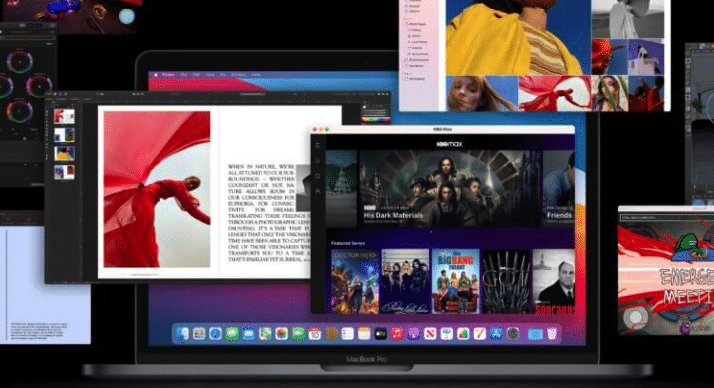Apple will remove the Rosetta 2 emulator, which allows running programs for computers based on Intel processors on new PCs with an ARM-based M1 chip. In some regions, it may disappear already from macOS 11.3, which will be released soon. Apple released Rosetta 2 less than half a year ago, although the first generation of an emulator running PowerPC programs on an Intel computer lasted for several years.
Table of Contents
Apple runs from Intel
Apple will completely disable support for x86 software in its new laptops and PCs based on the ARM-based M1 processor. This means that applications whose developers have not released an update with support for this chip will stop running on new Apple computers, and there will be no way to make them work.
According to MacRumors, Apple will do this by removing the Rosetta 2 emulator from macOS, which is required to run x86 programs on MacBooks and Macs with its new processor. The reference was found directly in the system code. Developer Steve Moser found the lines “Rosetta will be removed upon installing this update” and “Rosetta is no longer available in this region. Applications requiring Rosetta will no longer run. ”(Rosetta is no longer available in your region. Applications requiring Rosetta will no longer run).
It won’t be long to wait
Steve Moser found these lines in the code of macOS 11.3 beta 3 – Apple began distributing it among developers in early March 2021. There was no mention of the imminent termination of Rosetta in the previous beta.
This means that installing even this beta version of macOS may result in the inability to run programs created for Apple computers based on Intel. In other words, in the stable build of macOS 11.3, the release date of which has not yet been determined, not only developers but also ordinary users may encounter a non-working emulator.
No explanation
At the time of publication of the material, Apple did not comment on the find of Steve Moser. The reasons why she decided to disable Rosetta remain unknown, as well as who exactly will be left without this emulator.
In the macOS code, Steve Moser did not find a list of regions of the world whose residents will no longer be able to run their old programs on new hardware after installing a fresh macOS 11.3.
Where did Apple get the Intel emulator
Apple has been releasing its laptops and desktops on Intel’s mismatched x86 processors since 2006, but in June 2020, it decided to ditch them altogether. As an alternative, it chose ARM chips of its own design, and the first in the new line was the 5nm M1 processor.
In November 2020, based on it, Apple released the MacBook Air and Pro 13 laptops and the Mac mini nettop, along with the new macOS 11 Big Sur system, adapted for it. Rosetta 2 became part of this OS.
Steve Jobs at the presentation of the first generation Rosetta in 2005
If Apple removes its emulator from macOS 11.3, it will mean that it has given developers less than six months to adapt their programs to the new architecture. By comparison, when Apple switched from IBM PowerPC processors to Intel in 2006, it also released the first generation Rosetta emulator, which has been included with previous macOS versions for several years. Rosetta was announced at WWDC 2005.
The solution to the problem
There will be several ways out of the unavailability of old programs, and the most obvious of them is to postpone the abandonment of Mac computers based on Intel processors if the stable operation of the old software is critical. It is worth noting here that, despite the November release of three PCs with an M1 chip, Apple still sells Intel versions of its computers – they are available in many regions of the world.
The second way out is to delay the transition to the new version of macOS as long as possible. It is possible that the upcoming shutdown of Rosetta will spur software developers to adapt their applications to the new architecture, but, of course, not all of them will take this step.
What else is wrong with Apple’s new architecture?
Moving to new Macs with Apple’s own processors can go beyond programs that have been in use for years. Computers with M1 processors contain at least one more drawback, which can turn out to be significant expenses for users.
At the end of February 2021, CNews wrote that the solid-state drive resource’s ultra-fast consumption was revealed in new PCs based on the Apple M1 chip. For several users, the SSD was worn out by 4% less than a month after purchasing the computer. You cannot replace the drive yourself – you will have to contact the service centre.
Apple computers with Intel processors do not have such problems. For example, one user had a 3-year-old Intel Core-based iMac running for 4,100 hours, and during that time, its SSD was only 14% worn out.
At the time of this posting, Apple did not offer a solution to this problem.
